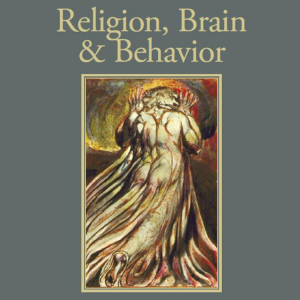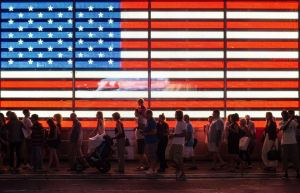Across the globe and throughout history, religiosity has been the norm. But occasionally, you find times or places where supernatural worldviews fade among a large portion of the population. Right now, for example, most of Northern Europe, Scandinavia, and many coastal cities in the US are largely not religious.
Why does this happen in some places and not others?
This has puzzled scholars for decades and many have offered partial explanations. A new wave of research, led by CMAC, is using computer modeling and simulation to answer these questions in a more sophisticated way than ever before. This approach is highlighted in the most recent paper from the Modeling Religious Change project, which integrates previous theories to show the four key conditions that lead to irreligious societies. Before jumping to those conditions, it’s worth dwelling on some of those previous theories.
Secularization Hypotheses
In the 1950s and 60s, a handful of scholars proposed the Secularization Hypothesis. The most famous of these scholars was Peter Berger, who summarized the hypothesis in one sentence: “Modernity inevitably produces a decline of religion.”
Modernity can mean lots of different things, but Berger was particularly interested in the ways that an individualistic and scientific view of the world would undermine the plausibility of religious beliefs. While this seems like a reasonable hypothesis, it didn’t bear out. With modernity advancing, religiosity is also on the rise across the globe.
This discrepancy led to other, more focused attempts to explain those unique cases that defy the expected connection between modernity and irreligiosity. For example, the US is pretty modern by most accounts, but also very religious, why is that? Social scientists Starke and Finke developed Religious Market Theory to argue that it’s because of competition between religious groups in the US. European nations typically have state religions, which means no competition and very low levels of religiosity. But what about nations like Saudi Arabia, which is a Muslim nation where 93% of the population is religious?
Another theory, coming from the World Values Survey, suggests that it’s not modernity per se, instead it’s existential security—the feeling that you can take survival for granted—that leads to lower levels of religiosity.
Each of these theories make sense and have data to support them. But they’re also all a bit narrow– each seems to be getting only part of the picture. What would it take to bring these all together? Scholars have tried and in doing so developed some solid insights.
But normal statistical methods have a hard time dealing with the level of complexity here.
For example, the rise of Pentecostal movements across South America have accelerated the development of liberal democratic societies, which in turn could undermine the religiosity that birthed them. With feedback loops and curvy relationships like these, you need something other than fancy multi-level stats.
Bringing it together
That’s where MRC comes in. Computational models and simulations allow researchers to combine many different pieces of the puzzle and analyze how they all interact.
For example, in this paper, the Future of Religious and Secular Transitions (FOReST) simulation includes: differing birth rates, resource scarcity, the degree to which people intermingle, levels of technology, levels of education, stability, exposure to religious and non-religious beliefs, etc.
Not only is this simulation capable of considering these various factors and their relationships with each other, it is also dynamic. This means it can track how those relationships change over time, which is what you’d expect from something as complex as secularization. In short, the secularization puzzle is exactly the sort of problem that computer simulation and modeling is made to handle.
By bringing all these factors together and watch how they influence each other, we learn that there are four main conditions needed for the emergence of a non-religious public.
- Freedom of expression– having less economic or social penalties on alternative forms of self-identification makes it possible for non-believers to publicly embrace their identity.
- Existential Security– If people aren’t concerned with their survival in the near future, then they have less need for the existential reassurances that religions can provide.
- Education– Both science and humanistic education undermine the plausibility of some supernatural beliefs associated with religion.
- Pluralism– Being exposed to many different religious systems can erode any exclusive claims of truth.
The Friendly Atheist over at Patheos also covered this article, so check out his great summary over there. One minor adjustment, however, to his description, which makes it sound like any of these will do the job. Within this model, all four conditions are necessary for the decline in supernatural worldviews.
For example, think about the US. The US has a strong tradition of freedom of expression and is quite pluralistic, but the education system depends heavily on local conditions, which can be good or bad, and existential security is far from guaranteed for large swaths of the population. Two of the four conditions are met and the US is still way more religious than Northern Europe, where all four hold.
Thinking about these four conditions can also focus our attention in helpful ways. Think about those places in the US with high levels of education and existential security, such as New England.
Unsurprisingly, these are not very religious places.
One of the advantages of considering all four conditions simultaneously is that it helps raise the persuasiveness of each individual explanation. For example, in 2011 a huge earthquake hit Christchurch, NZ and levels of religiosity rose among those people affected. The researchers who found this effect explained it as due to religion’s capacity to offer comfort (aka existential security). That’s true, but lots of other places are hit with big earthquakes and don’t necessarily see similar rises in religiosity. Is religion not comforting in those places?
New Zealand is a relatively secure, pluralistic, educated, and free place, so a huge blow to existential security is likely to cause a big jump in religiosity. If you look elsewhere and don’t see a big jump in religiosity after an earthquake, that doesn’t mean that the religious comfort hypothesis is wrong.
Instead, it’s likely that religiosity was already high because one or more of the other conditions was lacking.
In other words, by bringing multiple explanations together, this model of religious change not only provides new insights, it helps give all those prior theories a deeper context that makes each of them individually more plausible. The FOReST simulation is just the latest example of the value that new computational tools can bring to old questions.



